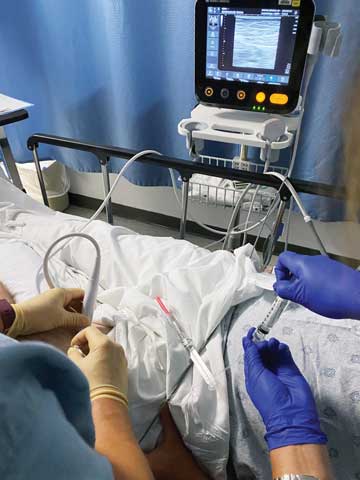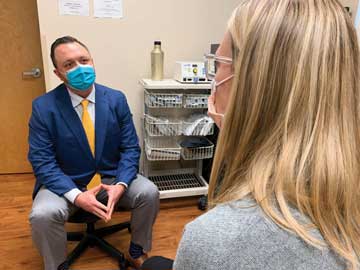Patients who have their knees and hips replaced at Yale Medicine in New Haven, Conn., are ready to head home the day of surgery in large part because they’re given shots of a medication cocktail mixed by anesthesiologist Jinlei Li, MD, PhD. She came up with the carefully crafted infusion of short-acting dexamethasone and long-acting methylprednisolone, a combination that packs quite an analgesic punch when administered around nerve blocks to extend their pain-relieving effect.
Dexamethasone has been commonly used for decades with longer-acting local anesthetics such as bupivacaine to manage pain for 15 to 24 hours. “Patients enjoy relief when the local anesthetic is effective, but the pain is sometimes too much for patients to bear when it wears off,” says Dr. Li.
She noticed in the literature that dexamethasone is typically administered in epidurals to manage chronic pain and provides days, weeks and even months of relief. “The medication is not FDA approved for peripheral nerve blocks or neuraxial anesthesia, but it can be injected safely into the epidural space, which is more proximal in terms of the nerve roots,” she says.
It’s innovations such as Dr. Li’s idea to enhance local anesthesia techniques at Yale Medicine that lessen providers’ reliance on opioids to manage the significant pain patients experience after knee and hip replacements.
The effective management of post-op pain is one of the key factors in patients being able to go home the day of surgery. Reducing their discomfort with minimal or no use of opioids allows them to ambulate soon after surgery. Doing so also avoids the potential adverse effects of the narcotics, which increase risk of PONV, constipation and respiratory depression — factors that delay discharges, jeopardize positive outcomes and negatively impact patient satisfaction.
Reducing the use of opioids is also part of providing responsible surgical care — the overprescribing of oxycodone, hydrocodone and methadone is a major cause of the opioid epidemic, according to the CDC. Although the nationwide opioid epidemic often loses out to the pandemic in the news cycle, it’s no less dangerous to the overall health and well-being of countless communities across the country.
.svg?sfvrsn=be606e78_3)


.svg?sfvrsn=56b2f850_5)